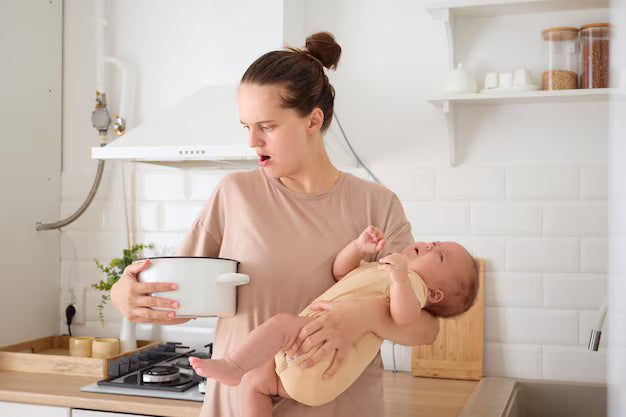
How to Warm Up Breast Milk: The Ultimate Parent’s Guide
Share
Breast milk is nature’s perfect food for infants, packed with essential nutrients, antibodies, and proteins that support growth, immunity, and brain development. For parents who pump and store milk, warming breast milk safely is just as important as proper storage. Improper warming can destroy delicate nutrients, damage immune factors, and create hot spots that could harm your baby.
In this guide, we’ll explore breast milk warming methods, step-by-step techniques for bringing milk from storage to feeding temperature, and provide tips for safely heating pumped milk. We’ll also include a breast milk temperature guide, advice on using milk warmers, and real-life, parent-tested strategies. Following these methods ensures your baby receives maximum nutrition while keeping feeding safe and stress-free.
Why Proper Warming of Breast Milk Matters
Heating breast milk incorrectly can reduce nutrient content, destroy antibodies, and break down healthy fats. Rapid or uneven heating—like microwaving—creates hot spots that may scald your baby and compromise milk quality.
Proper warming preserves:
- Proteins and antibodies – Protect your baby’s immunity, support digestion, and reduce the risk of infections.
- Essential vitamins and minerals – Maintain nutrients like vitamin C, B-complex, and calcium that support growth, bone development, and overall health.
- Healthy fats – Crucial for brain, eye, and nervous system development.
- Milk flavor and aroma – Keeps milk palatable, encouraging your baby to feed comfortably and consistently.
- Temperature consistency – Avoids overheating or cold spots, ensuring safe and even feeding.
Using safe warming methods not only protects milk quality but also gives parents peace of mind that their baby is receiving the full nutritional benefit from every feed.
Breast Milk Warming Methods
There are several breast milk warming methods that parents can safely use:
1. Warm Water Bath (Most Recommended)
A gentle and effective technique for heating milk:
-
Fill a bowl or pan with warm water (around 37–40°C).
-
Place the milk bottle in the water for a few minutes.
-
Swirl gently to distribute heat evenly.
-
Test a few drops on your wrist before feeding.
Benefits:
-
Prevents hot spots
-
Preserves nutrients
-
Simple and safe for daily use
For more on safe milk temperature, see milk temperature for baby.
2. Bottle Warmer Techniques
Modern milk warmers provide consistent and safe heating for pumped milk:
-
Pour water into the warmer according to the manufacturer’s instructions.
-
Place the refrigerated bottle inside.
-
Set the timer or temperature according to your breast milk temp guide.
-
Swirl gently before feeding.
Benefits:
-
Even warming prevents hotspots
-
Maintains nutritional quality
-
Convenient for night feeds and daycare
3. Running Warm Water
A practical option when a bowl or warmer isn’t available:
-
Hold the closed bottle under warm running water for 2–5 minutes.
-
Rotate and swirl gently to distribute heat.
-
Avoid using hot water to prevent nutrient loss.
4. Warming Milk in Insulated Bags (Travel-Friendly)
Parents on the go can safely warm milk using:
-
Insulated bottles filled with warm water
-
Portable battery-operated bottle warmers
-
Reusable warm packs are placed around the bottle
Learn more about travelling with breast milk.
Breast Milk Temperature Guide
Maintaining the correct temperature is essential:
- Body temperature (around 37°C) – Ideal for feeding comfort, preserves nutrients, and prevents digestive discomfort in babies.
- Avoid overheating (>40°C) – High heat can destroy delicate proteins, antibodies, and essential enzymes in breast milk, reducing its nutritional value.
- Never microwave – Microwaves create hotspots, uneven heating, and can scald your baby. Always use a warm water bath or bottle warmer for safe, consistent warming.
- Monitor temperature effectively – Parents can test milk by dropping a few drops on their inner wrist or use a thermometer to ensure it is slightly warm and safe for feeding.
-
Consistency matters – Warming milk gradually and evenly helps maintain its flavor, texture, and nutrient quality, ensuring your baby receives the full benefits of breast milk.
Parents can monitor milk using a thermometer or by testing a few drops on their inner wrist.
Step-by-Step Guide for Heating Pumped Milk Safely
Step 1: Take milk from the fridge or freezer
-
Refrigerated milk: Ready for warming immediately.
-
Frozen milk: Thaw in the fridge overnight or using a warm water bath. For detailed guidance, see how to thaw frozen breast milk.
Step 2: Choose a warming method
-
Warm water bath
-
Bottle warmer
-
Running warm water
Step 3: Swirl, don’t shake
-
Swirling mixes milk evenly without damaging delicate fats and proteins.
Step 4: Check temperature
-
Milk should feel slightly warm on your wrist, around 37°C.
Step 5: Feed promptly
-
Use within 2 hours after warming. Discard leftovers.
Tips for Heating Breast Milk Safely
-
Plan – Allow 10–15 minutes to warm milk gradually.
-
Portion wisely – Only warm what your baby will consume.
-
Rotate stock – Use older milk first to ensure freshness. For more, see breast milk storage.
-
Label bottles – Include expression and storage dates.
-
Avoid rewarming – Only heat milk once to maintain nutrient quality.
- Use sterile containers – Prevents bacterial contamination.
Real-Life Parent Tips
- Warm milk in small batches – Helps prevent waste, ensures milk stays fresh, and allows you to adjust portions based on your baby’s appetite.
- Use timers on bottle warmers – Avoids overheating, preserves nutrients, and gives consistent feeding temperatures every time.
- Check water temperature – Make sure water is warm, not hot, to protect delicate milk proteins and prevent burns.
- Swirl instead of shake – Maintains fat and protein integrity while mixing milk evenly for better feeding quality.
- Insulated bags for transport – Keep milk safe during travel, maintain a consistent temperature, and prevent spoilage.
- Label milk clearly – Note the date and time of expression to ensure you use the oldest milk first and reduce waste.
- Prepare feeding station ahead – Have bottles, warmers, burp cloths, and other essentials ready to make nighttime or on-the-go feeds smoother.
- Rotate feeding sides – Ensures your baby receives both foremilk and hindmilk, supporting balanced nutrition even during busy days or travel.
- Monitor milk consistency – Keep an eye on texture and separation, as proper swirling ensures nutrients are evenly distributed.
- Keep backup bottles ready – Having pre-warmed or easily warmable bottles helps with unexpected extra feeds.
Conclusion
Warming breast milk safely is crucial to preserve its nutrients, antibodies, and fats while ensuring comfortable feeding. Using gentle breast milk warming methods, following a proper breast milk temp guide, and adopting milk warmer techniques will protect milk quality and support your baby’s growth. By planning, warming in small batches, and practising good hygiene, parents can confidently feed pumped milk while minimizing waste and maintaining safety.
Faqs
How long can I leave milk out after warming?
Feed within 2 hours of warming. After this time, bacteria can multiply quickly, so discard any leftover milk immediately to keep your baby safe.
Can I microwave breast milk?
No. Microwaving creates hotspots that can burn your baby and destroy important nutrients and antibodies. Always use a warm water bath or a bottle warmer for even heating.
How do I know the milk is at the right temperature?
Test a few drops on your wrist—it should feel slightly warm, similar to body temperature. Milk that is too hot or cold can upset your baby’s stomach or reduce feeding comfort.
Can I reheat milk multiple times?
No. Milk should only be reheated once. Any leftover milk after a feeding must be discarded to prevent contamination and ensure safety.
Is it okay to shake the bottle while warming?
No. Vigorous shaking can break down delicate fats and proteins. Gently swirling the milk mixes it evenly while preserving nutrients.
Can I put milk straight from the fridge into a bottle warmer?
Yes. Follow the warmer instructions carefully and swirl the milk gently afterwards to make sure the temperature is uniform throughout.
What is the best method for nighttime feeds?
Bottle warmers are convenient, safe, and maintain nutrients. They also save time and reduce stress during late-night or early-morning feeds.
Can I warm milk in hot tap water?
Only use warm water at body temperature (~37°C). Hot water can damage nutrients and proteins, and increase the risk of uneven heating.
How do I quickly take milk from the fridge to the feeding temperature?
A warm water bath or bottle warmer works best. Allow 10–15 minutes for milk to heat safely and evenly before feeding.
Are there travel-friendly warming options?
Yes. Portable bottle warmers, insulated bags, and warm packs are effective for keeping milk at a safe, consistent temperature while on the go, ensuring your baby receives quality milk anywhere.
